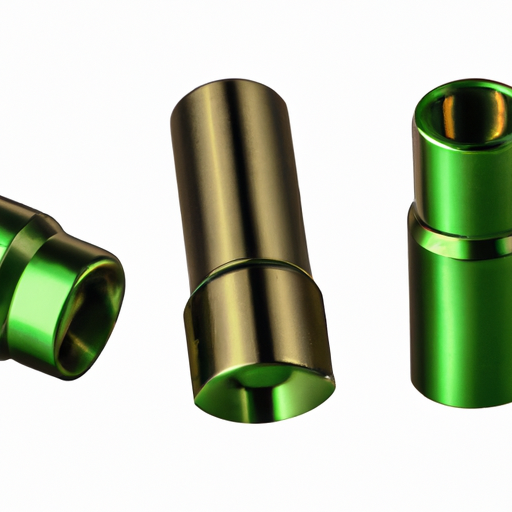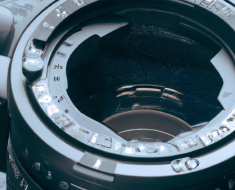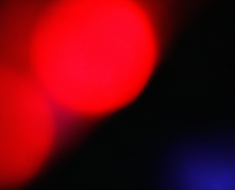Maximize control and accuracy with the right choice: Muzzle Brakes or Flash Hiders.
Pros and Cons of Muzzle Brakes
When it comes to choosing the right accessory for your rifle, there are a few key factors to consider. Muzzle brakes and flash hiders are two popular options that can enhance the performance of your firearm in different ways. In this article, we will explore the pros and cons of muzzle brakes to help you determine if this accessory is the right choice for your rifle.
Muzzle brakes are devices that attach to the end of a rifle barrel and help reduce recoil and muzzle rise. This can be particularly beneficial for shooters who are looking to improve their accuracy and control when firing multiple rounds quickly. By redirecting the gases produced during firing, muzzle brakes can help minimize the kickback felt by the shooter, allowing for more consistent and precise shots.
One of the main advantages of using a muzzle brake is its ability to improve shooting accuracy. By reducing recoil and muzzle rise, shooters can maintain better control over their firearm, leading to more accurate and consistent shots. This can be especially helpful in competitive shooting or hunting situations where precision is key.
Another benefit of using a muzzle brake is its ability to enhance shooter comfort. By reducing the felt recoil, shooters can enjoy a more comfortable shooting experience, allowing them to focus on their aim rather than dealing with the physical impact of each shot. This can be particularly useful for individuals who may have physical limitations or sensitivities that make shooting uncomfortable.
However, there are also some potential drawbacks to using a muzzle brake. One of the main concerns is the increase in noise levels that can result from using this accessory. Muzzle brakes work by redirecting gases outwards, which can create a louder shooting experience for both the shooter and those nearby. This can be a significant consideration for individuals who value hearing protection or shoot in areas where noise levels may be restricted.
Additionally, muzzle brakes can also create more noticeable recoil patterns that may affect the overall shooting experience. While they are designed to reduce recoil and muzzle rise, some shooters may find that the redirected gases cause an uneven or unpredictable recoil pattern that can impact their shooting performance. It is important to consider how these factors may affect your shooting style and preferences before deciding to use a muzzle brake.
In conclusion, muzzle brakes offer several advantages for shooters looking to improve accuracy and control when firing their rifles. By reducing recoil and muzzle rise, these accessories can help enhance shooting performance and comfort. However, it is important to weigh these benefits against potential drawbacks such as increased noise levels and altered recoil patterns before making a decision. Ultimately, the choice between using a muzzle brake or another accessory such as a flash hider will depend on your specific needs and preferences as a shooter.
Pros and Cons of Flash Hiders
When it comes to choosing the right muzzle device for your rifle, there are several factors to consider. One of the most common debates in the firearms community is whether to use a muzzle brake or a flash hider. Both devices serve different purposes and have their own set of pros and cons.
Let’s start by looking at the advantages of using a flash hider. A flash hider is designed to reduce the visible signature of a rifle’s muzzle flash when firing in low-light conditions. This can be especially useful for tactical situations where staying hidden is crucial. By minimizing the muzzle flash, a flash hider helps to maintain your position and keep you concealed from potential threats.
Another benefit of using a flash hider is that it can reduce the amount of recoil felt by the shooter. The design of a flash hider typically includes some form of baffles or ports that redirect gases to help mitigate recoil. This can make shooting more comfortable and improve overall accuracy by allowing for faster follow-up shots.
In addition, a flash hider can also help to protect the crown of your rifle’s barrel from damage. The crown is the end of the barrel where the bullet exits, and it plays a critical role in maintaining accuracy. By shielding the crown from debris and other environmental factors, a flash hider can help prolong the life of your rifle.
However, there are also some drawbacks to using a flash hider. One of the main disadvantages is that it does not do much to reduce muzzle rise or felt recoil compared to a muzzle brake. If you are looking to improve control over your rifle during rapid fire or heavy recoiling loads, a muzzle brake may be a better option.
Another downside to using a flash hider is that it can increase the overall length of your rifle. This may not be an issue for some shooters, but if you are trying to keep your rifle as compact as possible for maneuverability in tight spaces, a flash hider may not be ideal.
Lastly, some shooters have reported that certain flash hiders can negatively impact accuracy by disrupting the airflow around the bullet as it leaves the barrel. While this may not be noticeable at shorter distances, it could become more apparent at longer ranges.
In conclusion, flash hiders offer several benefits such as reducing muzzle flash, mitigating recoil, and protecting your rifle’s crown. However, they may not be as effective at controlling muzzle rise or felt recoil compared to a muzzle brake. Additionally, some shooters have experienced decreased accuracy with certain flash hiders.
Ultimately, the decision between using a flash hider or a muzzle brake will depend on your specific needs and preferences as a shooter. It is important to weigh the pros and cons of each device carefully before making a choice that best suits your individual shooting style and intended use for your rifle.
Performance Differences Between Muzzle Brakes and Flash Hiders

When it comes to enhancing the performance of your rifle, there are a few key components to consider. Two of the most popular options for improving the functionality of your firearm are muzzle brakes and flash hiders. Both serve important purposes, but they have distinct differences that can impact your shooting experience. In this article, we will explore the performance differences between muzzle brakes and flash hiders to help you determine which option is best for your rifle.
Muzzle brakes are designed to reduce recoil and muzzle rise, making it easier for shooters to stay on target during rapid fire. By redirecting gases to the sides and rear of the firearm, muzzle brakes effectively counteract the forces that cause the barrel to rise and push the shooter backward. This can lead to more accurate and faster follow-up shots, especially in high-pressure situations.
On the other hand, flash hiders are primarily used to reduce the visible signature of muzzle flash when firing in low-light conditions. By dispersing gases more evenly as they exit the barrel, flash hiders help conceal the shooter’s position and minimize distractions caused by bright flashes. This can be particularly useful for hunters or military personnel who need to maintain stealth and avoid giving away their location.
One of the main differences between muzzle brakes and flash hiders is their impact on recoil management. While both devices can help improve accuracy by reducing muzzle rise, muzzle brakes are generally more effective at mitigating felt recoil. This can be a significant advantage for shooters who prefer a more comfortable shooting experience or need to maintain control over their firearm in high-stress situations.
Another important factor to consider when choosing between a muzzle brake and a flash hider is their effect on sound levels. Muzzle brakes can increase the overall noise level of your firearm due to the redirection of gases and sound waves. This can be a concern for shooters who value hearing protection or need to maintain stealth during shooting activities. In contrast, flash hiders typically do not have a significant impact on sound levels, making them a quieter option for those who prioritize auditory comfort.
In terms of aesthetics, muzzle brakes and flash hiders offer different visual profiles that can complement the overall look of your rifle. Muzzle brakes often feature a more aggressive design with multiple baffles or ports that protrude from the barrel. This can give your firearm a tactical appearance and make it stand out on the range. Flash hiders, on the other hand, tend to have a more streamlined and understated look that blends in seamlessly with the barrel.
Ultimately, the choice between a muzzle brake and a flash hider comes down to personal preference and intended use. If you prioritize recoil reduction and faster follow-up shots, a muzzle brake may be the best option for your rifle. On the other hand, if you value stealth and reduced muzzle flash, a flash hider could be more suitable for your needs.
Whichever device you choose, it’s important to consider how it will impact your shooting experience and make an informed decision based on your individual preferences and requirements. By understanding the performance differences between muzzle brakes and flash hiders, you can select the option that best suits your needs and helps you get the most out of your rifle.
Best Applications for Muzzle Brakes
When it comes to choosing the right muzzle device for your rifle, there are a few key factors to consider. Muzzle brakes and flash hiders are two popular options, each with its own set of benefits and drawbacks. In this article, we will take a closer look at muzzle brakes and explore the best applications for this particular type of muzzle device.
Muzzle brakes are designed to reduce felt recoil and muzzle rise when firing a rifle. This can be especially beneficial for high-powered rifles that generate a significant amount of recoil. By redirecting the gases produced by firing the round, muzzle brakes help to counteract the rearward force of recoil, making it easier to stay on target and quickly reacquire your sight picture after each shot.
One of the best applications for muzzle brakes is in precision shooting competitions. The reduced recoil and muzzle rise provided by a muzzle brake can help shooters stay on target and make more accurate shots, especially at long distances. In addition, the ability to quickly reacquire your sight picture after each shot can be crucial in competitions where speed is a factor.
Muzzle brakes can also be beneficial for hunting rifles, particularly those chambered in high-powered calibers. The reduced recoil provided by a muzzle brake can help hunters make more accurate shots and minimize flinching, which can be especially important when hunting large game or shooting at longer ranges.
Another key application for muzzle brakes is in tactical or defensive shooting situations. The reduced recoil and muzzle rise provided by a muzzle brake can help shooters stay on target and make follow-up shots more quickly and accurately. In high-stress situations where split-second decisions can mean the difference between life and death, having a muzzle brake on your rifle can give you a significant advantage.
It’s important to note that while muzzle brakes can offer some significant benefits, they do come with a few drawbacks as well. One of the main drawbacks of using a muzzle brake is the increased noise and blast that is generated when firing the rifle. This can be especially noticeable when shooting in confined spaces or in close proximity to other shooters.
Additionally, some shooters may find that the increased recoil reduction provided by a muzzle brake comes at the cost of increased muzzle blast and flash. This can be particularly problematic for shooters who are sensitive to loud noises or who shoot in low-light conditions where muzzle flash can obscure their sight picture.
In conclusion, muzzle brakes can be an excellent choice for shooters looking to reduce felt recoil and improve their accuracy when firing a rifle. They are particularly well-suited for precision shooting competitions, hunting rifles chambered in high-powered calibers, and tactical or defensive shooting situations where quick follow-up shots are crucial. However, it’s important to weigh the benefits of using a muzzle brake against the potential drawbacks, such as increased noise and blast, before making a decision on whether or not to use one on your rifle.
Best Applications for Flash Hiders
Flash hiders are muzzle devices designed to reduce the visible flash produced by the combustion of gunpowder when a firearm is discharged. They work by dispersing the burning gases that exit the muzzle of the firearm, effectively reducing the size and intensity of the flash. Flash hiders are commonly used on military and law enforcement firearms to minimize the shooter’s visibility in low-light or nighttime situations. However, they also have practical applications for civilian shooters.
One of the primary benefits of using a flash hider on your rifle is that it can help preserve your night vision in low-light conditions. When shooting in darkness, the bright muzzle flash produced by a firearm can be blinding and disorienting, making it difficult to maintain situational awareness. By using a flash hider, you can significantly reduce the intensity of the flash, allowing you to maintain your vision and effectively engage targets without being blinded by your own rifle.
Another advantage of using a flash hider is that it can help conceal your position when shooting in low-light environments. The bright muzzle flash produced by an unsuppressed firearm can easily give away your location to potential threats or adversaries. By using a flash hider, you can minimize the visible signature of your rifle’s muzzle blast, making it more difficult for others to pinpoint your position based on the flash of your firearm.
Additionally, flash hiders can help reduce recoil and muzzle rise when firing your rifle. By redirecting some of the escaping gases upward and to the sides, flash hiders can help counteract the upward force generated by the recoil of the firearm. This can result in a more stable shooting platform and faster follow-up shots, especially when firing in rapid succession.
Furthermore, flash hiders can also help protect your hearing by directing some of the escaping gases away from the shooter’s ears. The loud muzzle blast produced by a firearm can cause hearing damage over time, especially when shooting indoors or in confined spaces. By using a flash hider, you can help mitigate some of the noise generated by your rifle, making shooting more comfortable and safer for your ears.
In conclusion, flash hiders are versatile muzzle devices that offer a range of benefits for shooters across different disciplines. Whether you’re a civilian shooter looking to preserve your night vision and conceal your position or a military or law enforcement professional needing to maintain situational awareness in low-light environments, a flash hider can be a valuable addition to your rifle setup. With their ability to reduce muzzle flash, protect hearing, and improve shooting performance, flash hiders are an essential accessory for any shooter looking to optimize their rifle’s capabilities.





